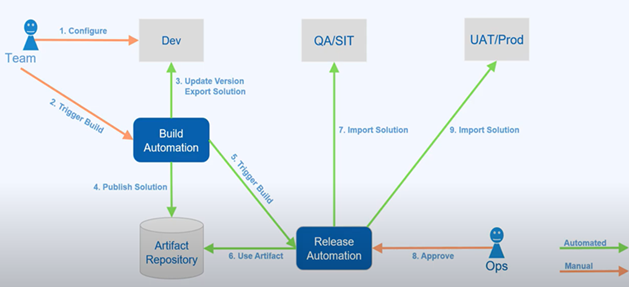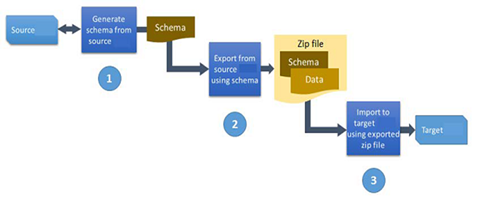In May, AIS held an internal hackathon for Microsoft Power Platform to expose our team to the platform, concepts, approaches through hands-on experience and to demonstrate the role Power Platform plays in modernizing legacy applications in the cloud.
The DevOps team automated the portal deployment process using Power DevOps Tools and deployed the solution across three environments (dev, test, prod). Since Microsoft Power Platform does not support source control and versioning, the team used Azure DevOps as the solution repository and version control.
Introduction
When building apps on Microsoft Power Platform, use Microsoft Power Platform Build Tools to automate common build and deployment tasks. These tasks include:
- Synchronization of solution metadata (also known as solutions) that contains the various platform components like model-driven apps, connectors, and virtual agents.
- Generating build artifacts
- Deploying to downstream environments
- Provisioning or de-provisioning environments
- Checking solutions to identify problematic patterns
Our Purpose
We can easily create compelling apps, and automation flows using Microsoft Power Platform. But, regardless of platform technology – how do you package and deploy the solution between various environments? Usually, at least three are for development, one for testing, and one for production. Power Platform is no exception: you should have separate development (dev), test, and production (prod) environments for your solution. So, let’s look at how to automate the deployment of Power Platform solutions from one environment to another.
Architecture Flowchart Diagram
Technical Approach
Problem:
The following picture shows the manual and repetitive steps required to deploy the Power Platform solution from one environment to another. Manual tasks are prone to errors, and actions are missed or incorrectly executed. This can lead to defects and inconsistency across environments.
Approach
Azure DevOps and Power Platform Build Tools help automate manual tasks and minimize issues to make the team more efficient. Once there is automation, releases become more consistent and predictable, and requirements move more quickly between environments. This gives the team more confidence plus the ability to release more frequently.
Automate Build and Deploy Solutions
Microsoft Power Platform Build Tools tasks are used along with any other available Azure DevOps tasks to compose, build and release pipelines. Pipelines that teams commonly put in place include Initiate, Export from Dev, Build, and Release.
- In our application, we used three environments (dev, test, prod). We exported the solution from dev and source controlled to git.
- Packed the solution from source control and deployed it to test.
- Exported the managed solution from test and imported it into prod.
Automate Portal Deployment
Portal development involves several configurations and customizations to achieve the desired experience for portal end-users. After the development and configuration of a portal instance are complete, it is deployed in other environments like test and prod. Creating a manual backup of your portal configuration and importing it to different environments is a very time-consuming process. The portal deployment process can be easily automated by installing Power DevOps Tools, an additional toolset available in the Azure Marketplace.
- In our application, we used three environments (dev, test, prod). The default configuration (schema file) was downloaded from Migrate portal configuration – Power Apps | Microsoft Docs
- Exported the data using the configuration and deployed to test and prod using DevOps.
Lessons Learned & Next Steps
- With the help of Power Platform build tools, we can easily deploy the solution into various environments.
- We can source control the Power Platform environment.
- Increase the release frequency.
Thank you to the DevOps team for sharing their experience
- Vikram Reddy (team lead)








